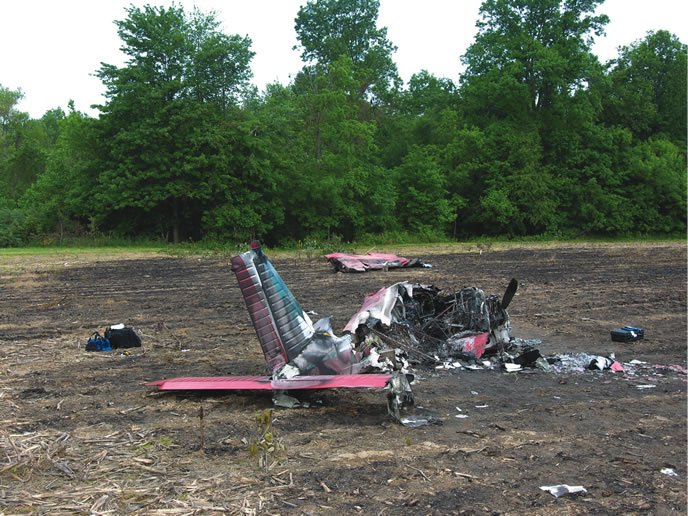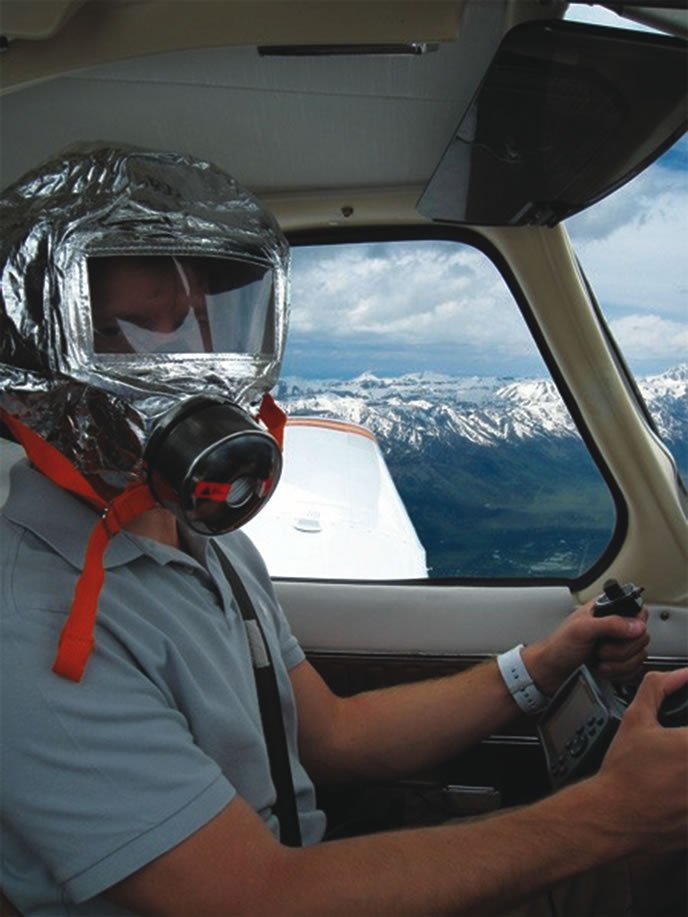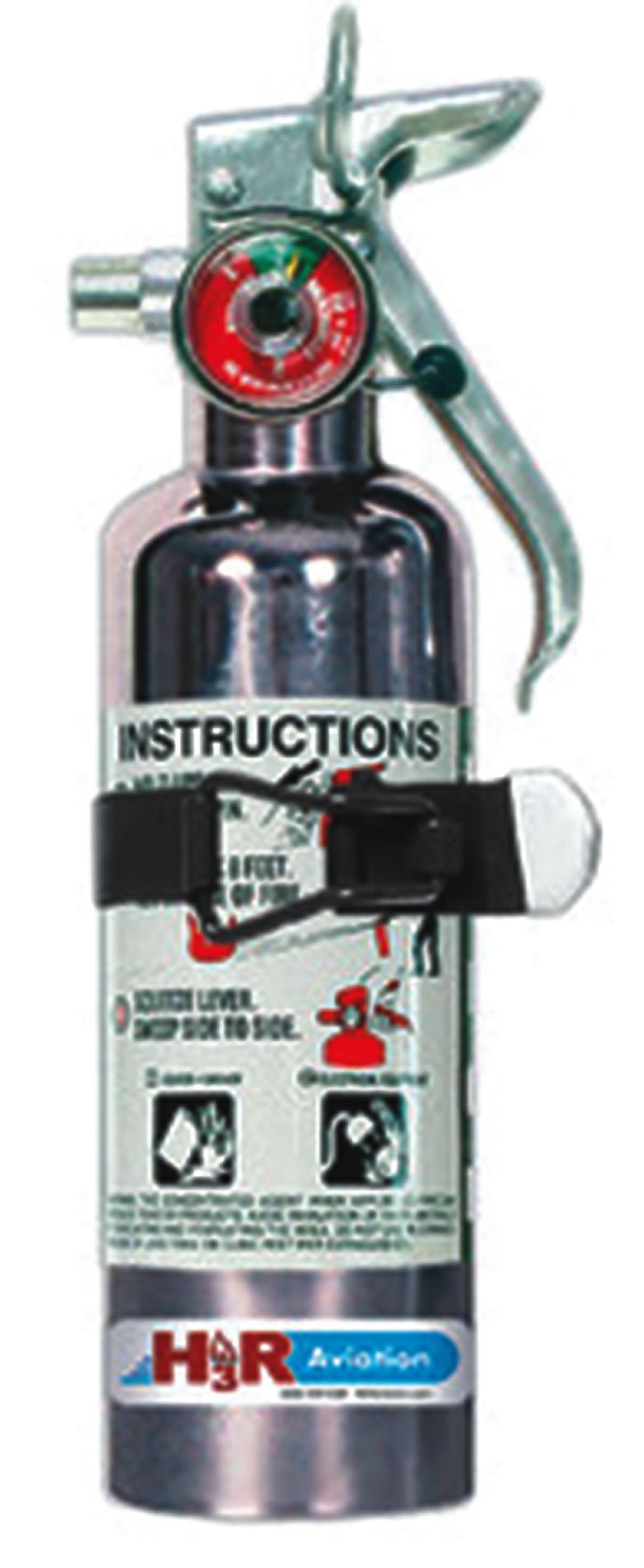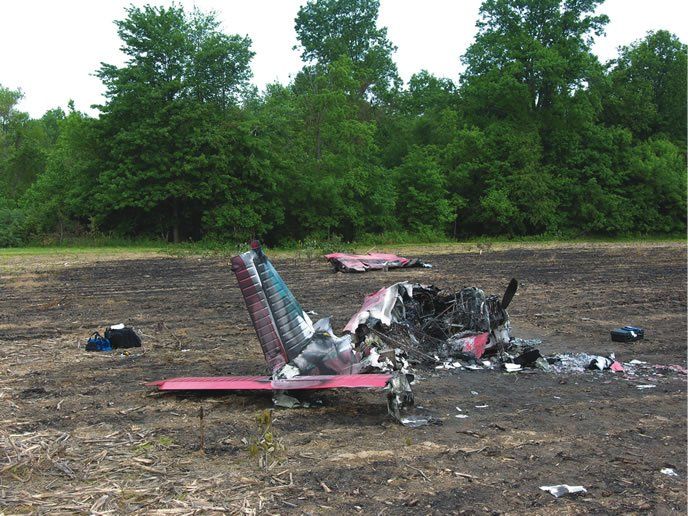Combustion requires an appropriate fuel and an ignition source, plus air. When we’re airborne, we have lots and lots of air available, some of it moving quite fast, enabling and perhaps worsening a fire. Depending on the source, location and intensity of an in-flight fire, it can have catastrophic effects on the airframe, engine(s), electrical system and, of course, the occupants. So, it’s not much of a stretch for us to say an in-flight fire is one thing all pilots should respect.
The best way to handle an in-flight fire is by preventing one in the first place, usually by employing sound maintenance and operating practices. But stuff happens, and how we might try to extinguish or control an in-flight fire depends on its nature and location. One thing that should be abundantly clear to any pilot is that the first indication of an in-flight fire is more than sufficient reason to declare an emergency and prepare to land immediately, even off-airport if appropriate.

Engine And Wing fires
How you respond to an in-flight fire is mostly determined by its source. Engine, electrical, wing and cabin fires all have occurred during flight, preferably not at the same time. An engine-compartment fire usually involves fuel, oil, or hydraulic fluid coming into contact with a hot surface.
Multiple combustion sources exist under the typical cowling, including cracked induction or exhaust systems, a broken fuel line, failed turbocharger or even a cracked crankcase. Early indications can include a drop and/or fluctuation in fuel pressure—suggesting a broken and leaking fuel line—or a rough-running engine. In the absence of flames and smoke erupting from the engine compartment, discoloration, bubbling and melting of the engine cowling skin should get your attention. Although there’s a firewall between a traditional single and the cabin, fires have been known to impact the cabin. An engine fire in this instance is probably a worst-case scenario.
A confirmed engine-compartment fire means shutting down the engine by cutting off its fuel, feathering the prop if possible and turning off its ignition system. If you’re in a single, and you’ve shut down the engine, you know what’s coming next. In a twin, you have more options, but remaining aloft really isn’t one of them. You need to get on the ground.
A wing fire may cause significant structural damage. It usually involves fuel or hydraulic fluid ignited by failed electrical wiring, or by a fire in a wing-mounted engine. A wing-mounted engine fire usually is close to a fuel supply. If it be can’t extinguished, it easily can burn into a fuel tank or through a wing spar. Retractable landing gear, flight controls and/or flap systems also may be damaged.
Electrical Fires
Electrical fires usually announce themselves with the acrid smell of hot and burning insulation and/or white-bluish smoke. Causes include old wiring and frayed insulation, failed or overheated avionics or a short circuit. Once detected, the pilot should identify the faulty circuit by checking fuses and circuit breakers. If an open circuit breaker is hot, don’t reset it—it tripped for a reason.
If the compromised circuit cannot be detected and disabled, and flight conditions permit, turn off the master and alternator/generator switches to remove the source of the fire. It should be noted that anything already ignited may continue to burn. If electrical power is required, try to identify and isolate the faulty circuit by turning off everything, then turn on the master and alternator/generator switches. If no additional fire indications are noticed, energize critical circuits—avionics, lights—one at a time while looking for signs of odor, smoke or sparks. If fire indications return after energizing a circuit, you’ve found the problem: leave that circuit off until a technician has repaired it. For some airplanes, this may mean a no-flap landing or lowering the landing gear manually. A handheld, portable transceiver and a GPS receiver will come in very handy.
Cabin Fires
Cabin fires may result from careless smoking, but electrical equipment and heating systems also have been implicated. Insulation, rug and seat fabrics are great fuel sources for fires, as is cargo. One way to minimize the risk of a cabin/cargo fire is to ensure items loaded aboard do not contain any hazardous materials that can readily ignite and burn.
Cabin fires should be immediately extinguished using a readily available Halon 1301 fire extinguisher. Open outside air vents away from the pilot to purge the cabin of smoke and fumes—opening a vent near the pilot likely will draw smoke, fumes and extinguisher residue towards the pilot, compromising vision and breathing. If smoke increases when cabin air vents are opened, the greater airflow is feeding the fire. Close the vents.
Emergency descents
Emergency descents are used to reach a lower altitude or the surface as quickly as possible. It’s on the FAA’s private pilot checkride, and it’s something we always should be able to demonstrate. An emergency descent is called for when dealing with an uncontrollable fire or sudden loss of cabin pressure at high altitude, and gets you down as quickly as possible within structural limitations. The maneuver is described in the manufacturer’s flight manual or POH and should be practiced and performed as specified.
Unless specifically stated otherwise, power should be set to idle and the aircraft pitched down for the recommended airspeed, which could be maximal structural cruising speed (VNO), never-exceed speed (VNE), maximum landing gear extended speed (VLE), or maximum flap extended speed (VFE). For example, the POH for a Piper PA-44-180T (Turbo Seminole) states to use VLE, 140 KIAS.
In turbulent conditions, the pilot also should consider the turbulence penetration airspeed (VB, which is roughly equivalent to 1.7 VSO), the maximum airspeed at which a gust will not overstress the airframe. It’s important to understand maneuvering speed (VA)—which typically is used as the reference airspeed in turbulence—is higher than VB (Aviation Safety, January 2013).
Airframe Damage?
The potential for airframe damage in the descent is of concern at high airspeeds, especially when practicing or demonstrating an emergency descent and no in-flight fire is observed. Abruptly pitching the nose down may result in excessive negative G-loading and airspeeds exceeding the aircraft’s velocity-load (V-G) diagram. Structural damage and airframe failure may result.
For example, a late-model Cessna 172 operated in the Normal category with flaps up comes with a published maximum negative G-load of -1.52 G, the lower limit on its V-G diagram. Negative G-loads greater than this easily can be generated by rapidly pushing the stick/yoke forward to descend.
A technique to prevent excessive negative G is to first roll into a moderately steep bank—approximately 45 degrees—to maintain positive G forces on the airplane, then lower the nose to descend at the top of the green arc (VNO), or recommended airspeed. The positive G-load of turning helps offset the negative G from pushing over.
It’s important to understand that preservation of the airframe by complying with published limitations as stated in the manufacturer’s emergency descent recommendations. It’s also important to understand an uncontrollable in-flight fire is about as severe an emergency as you’ll encounter. In such an event, preserving the airframe for future flights may be a secondary concern if future flights in that airframe appear unlikely.
aeromedix.com
Your emergency authority
An in-flight fire may significantly damage an aircraft, compromising its ability to remain under control at any moment, and demands immediate and decisive action. Time is critical and limited for survival. In other words, descend first and then inform ATC, if you can. There isn’t enough time to review an emergency checklist, so immediate-action items need to be memorized, enabling a pilot to respond promptly and appropriately.
Emergency checklists for some aircraft may include turning off the master switch. Pilots need to consider the limitations this imposes: Unless the fire is due to electrical reasons, shutting off the electrical system precludes use of the radios for transmitting a distress call as well as transponder operation.

When responding to an in-flight fire, the pilot should not waste the limited time available trying to save the airplane by reaching an airport. Far too many examples of such attempts can be found in NTSB reports. Unless you’ve confirmed the fire is out and a runway is within sight, there simply is no time for that. An aggressive rate of descent to an emergency off-airport landing is needed while maintaining airplane control at a safe airspeed. The pilot must adopt the attitude that the airplane will be destroyed by the fire once it comes to a stop and its occupants egress; it can be sacrificed to help save the lives of all aboard. At the first confirmation of an in-flight fire, an emergency descent plan needs to be put into action without delay. It should be the same one you’ve practiced in training.




